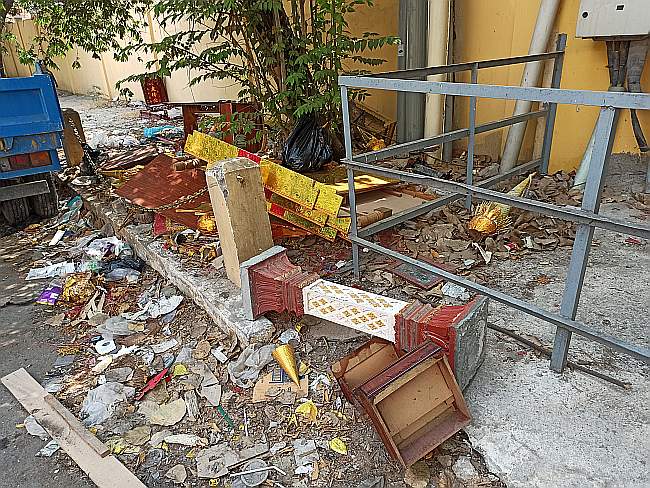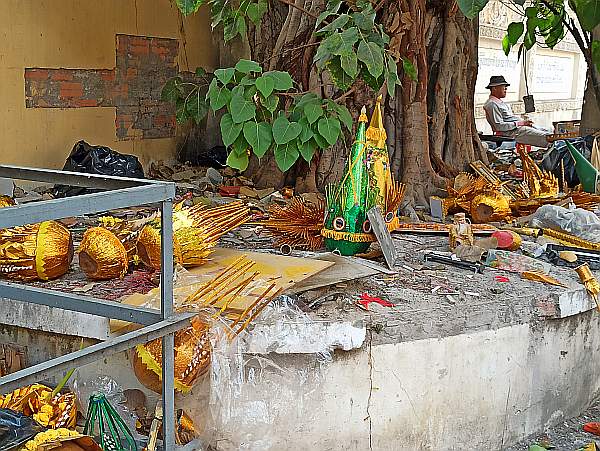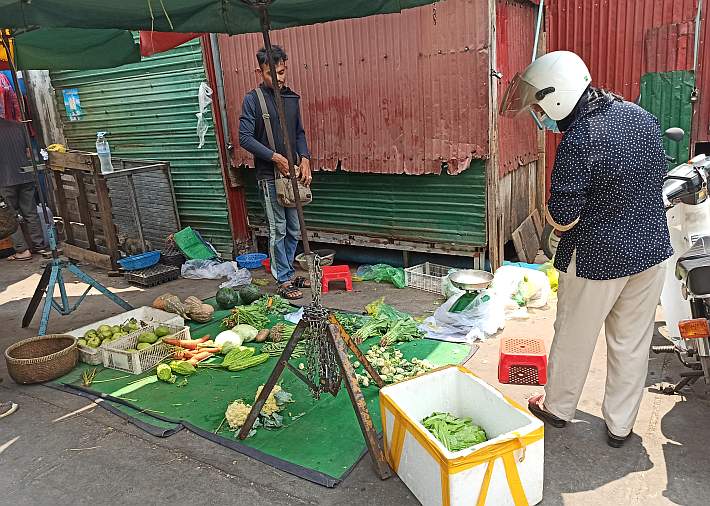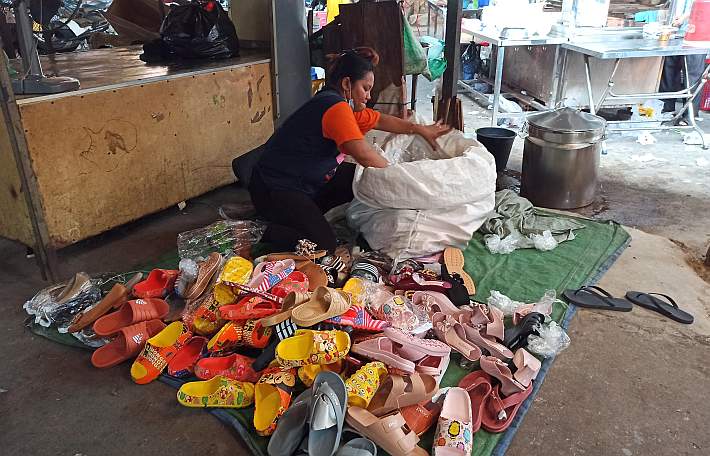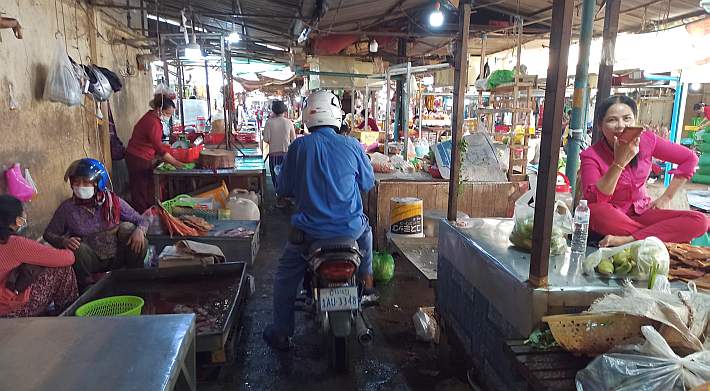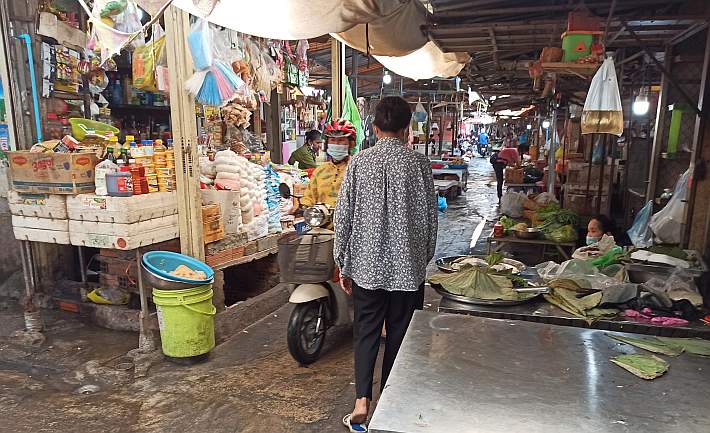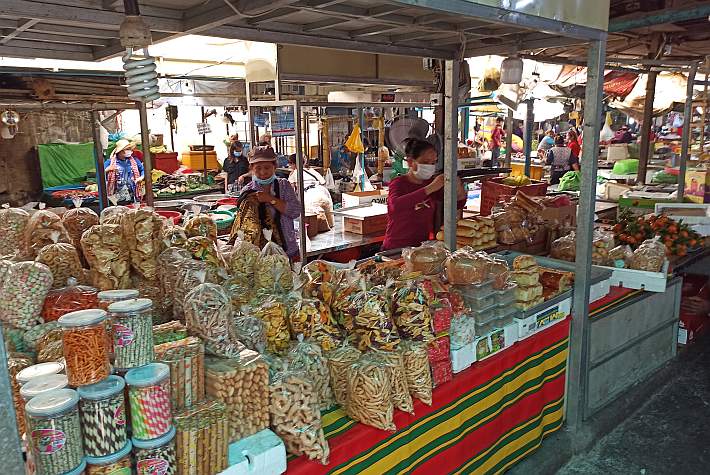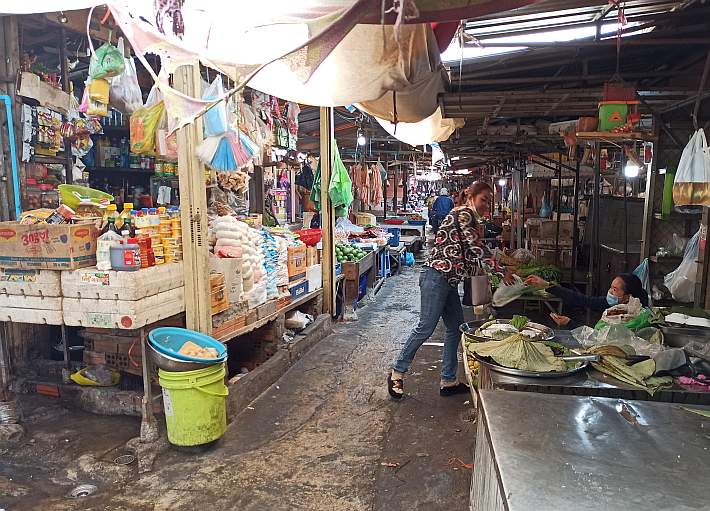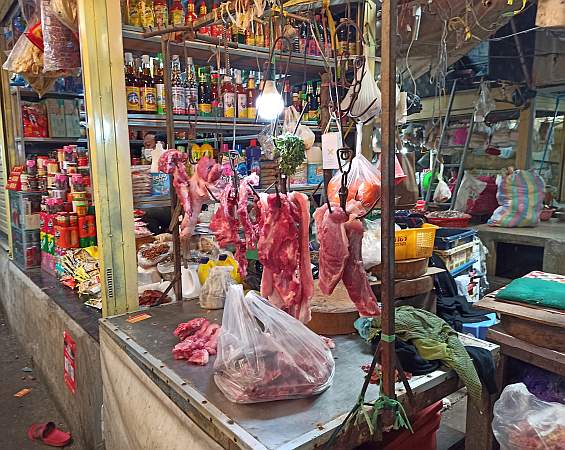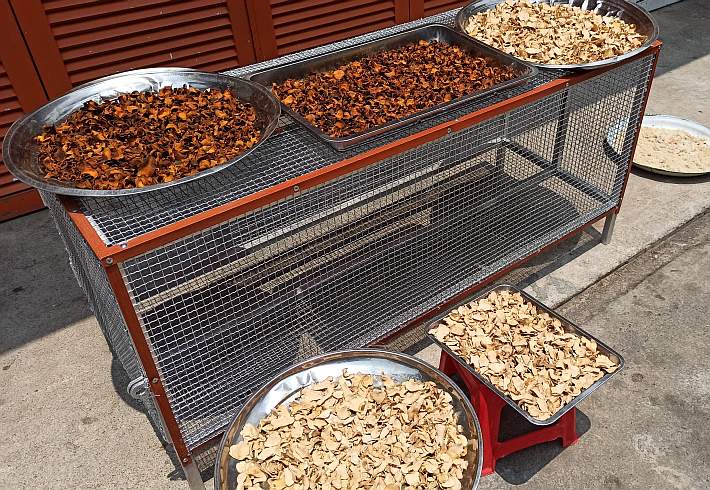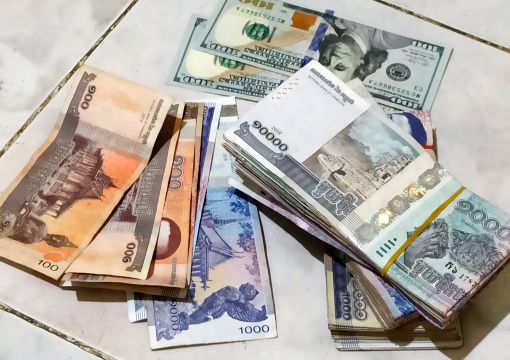
COVID-19 conditions are getting worse by the day here in Cambodia—we’re going into the first wave that the rest of the world went through at this time a year ago—and I would not be surprised if we have a major lockdown within the next week.
Part of my getting ready for that possibility was making sure that I have enough riel for spending on things. The government is trying to de-dollarize the Cambodian economy so the US dollar is still legal but the smaller US bills ($5 and $1) are being phased out of circulation and riel is now needed for less expensive transactions.
The current rate of exchange is US $1 = 4064 riel so when I gave two $100 bills to the exchange today, I got back more than 800,000 riel. Even getting most of that in really high-denomination riel notes, I had a stack of riel almost two inches high.
